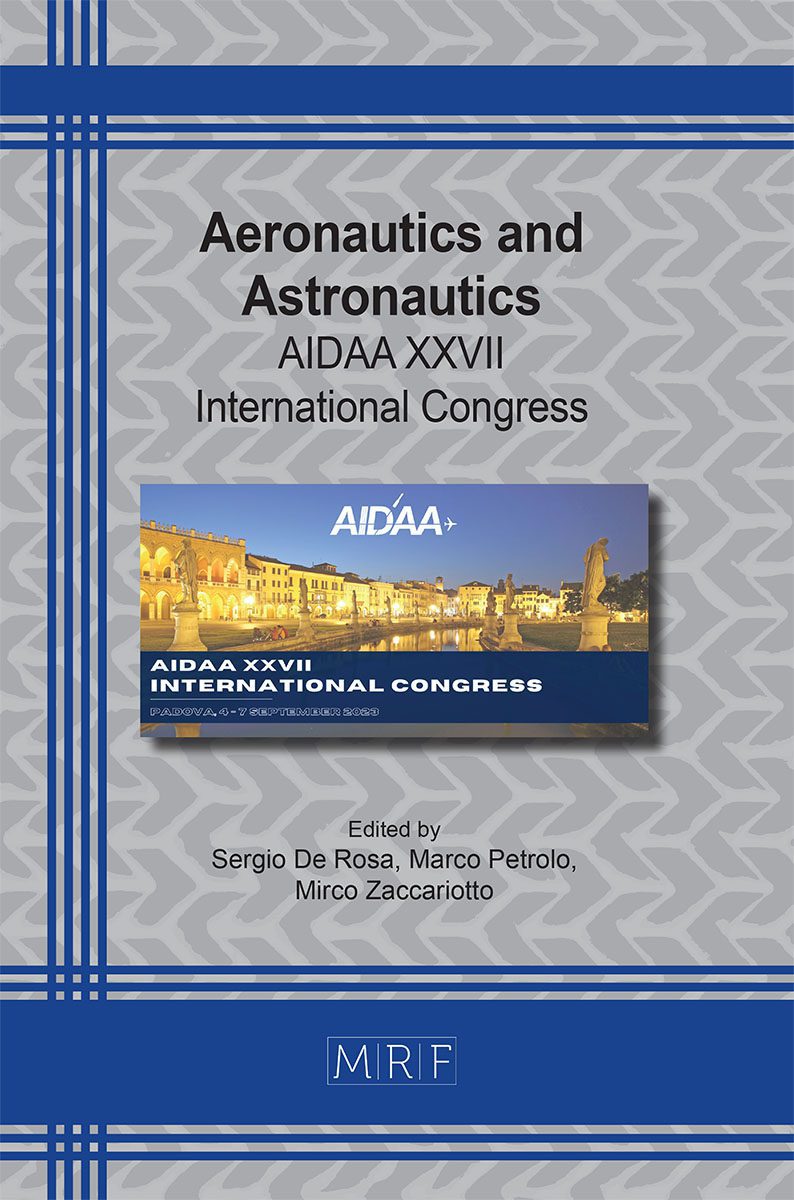Conjugate heat transfer applied to transitory analysis for rocket engine cooling systems design
Vincenzo Barbato, Matteo Fiore, Francesco Nasuti
download PDFAbstract. This study investigates the use of an in-house Conjugate Heat Transfer (CHT) numerical solver for the modelling of transient phenomena in liquid rocket engines active cooling systems. Heat transfer considerations place great limitations in the development of rocket engines and transient operative conditions are amongst the most critical. The current lack of models and numerical tools capable of accounting for the complexities of this time-dependent multi-physics problem, results in oversized cooling systems, long development times and increased risk of failure. The fine modelling of all the involved phenomena and their interaction with each other is crucial to achieve a correct prediction of the thermal fluxes and wall temperatures involved. Hence, CHT simulations are the state-of-the-art for this application. The CHT solver proposed in this work utilizes a partitioned coupling strategy where two extensively validated single-physics solvers exchange information through their interfaces at discrete time steps. A simplified version of the RL-10A-3-3A regenerative cooling jacket is considered as reference to test the strengths and the limits of this approach. Both a complete chilldown of the engine and part of the start-up transient have been simulated. The analyses performed show the ability of the solver proposed to deal with transient phenomena where fluid-structure interaction occurs. In addition, they provide a complete overview of the numerical issues related to the partitioned coupling approach. These preliminary results pave the way for further developments aimed at increasing the reliability of the solutions and extending the application field of the software developed.
Keywords
Conjugate Heat Transfer, Liquid Rocket Engine, Regenerative Cooling Systems
Published online 11/1/2023, 5 pages
Copyright © 2023 by the author(s)
Published under license by Materials Research Forum LLC., Millersville PA, USA
Citation: Vincenzo Barbato, Matteo Fiore, Francesco Nasuti, Conjugate heat transfer applied to transitory analysis for rocket engine cooling systems design, Materials Research Proceedings, Vol. 37, pp 206-210, 2023
DOI: https://doi.org/10.21741/9781644902813-45
The article was published as article 45 of the book Aeronautics and Astronautics
![]() Content from this work may be used under the terms of the Creative Commons Attribution 3.0 license. Any further distribution of this work must maintain attribution to the author(s) and the title of the work, journal citation and DOI.
Content from this work may be used under the terms of the Creative Commons Attribution 3.0 license. Any further distribution of this work must maintain attribution to the author(s) and the title of the work, journal citation and DOI.
References
[1] John B., Senthilkumar P. and Sadasivan S., “Applied and theoretical aspects of conjugate heat transfer analysis: A review,” Archives of Computational Methods in Engineering, Vol. 26, 2019, pp. 475–489. https://doi.org/10.1007/s11831-018-9252-9
[2] Verstraete, T., and Scholl, S., “Stability analysis of partitioned methods for predicting conjugate heat transfer,” International Journal of Heat and Mass Transfer, Vol. 101, 2016, pp. 852–869. https://doi.org/10.1016/j.ijheatmasstransfer.2016.05.041
[3] Giles, M. B., “Stability analysis of numerical interface conditions in fluid–structure thermal analysis,” International journal for numerical methods in fluids, Vol. 25, No. 4, 1997, pp. 421–436. https://doi.org/10.1002/(SICI)1097-0363(19970830)25:4%3C421::AID-FLD557%3E3.0.CO;2-J
[4] Binder, M., Tomsik, T., and Veres, J. P., “RL10A-3-3A rocket engine modeling project,” Tech. rep., 1997.
[5] Binder, M., “A transient model of the RL10A-3-3A rocket engine,” 31st Joint Propulsion Conference and Exhibit, 1995, p. 2968. https://doi.org/10.2514/6.1995-2968
[6] Pizzarelli, M., Nasuti, F., and Onofri, M., “Coupled wall heat conduction and coolant flow analysis for liquid rocket engines,” Journal of Propulsion and Power, Vol. 29, No. 1, 2013, pp. 34–41. https://doi.org/10.2514/1.B34533
[7] Pizzarelli, M., Urbano, A., and Nasuti, F., “Numerical analysis of deterioration in heat transfer to near-critical rocket propellants,” Numerical Heat Transfer, Part A: Applications, Vol. 57, No. 5, 2010, pp. 297–314. https://doi.org/10.1080/10407780903583016
[8] Spalart, P., and Allmaras, S., “A one-equation turbulence model for aerodynamic flows,” 30th aerospace sciences meeting and exhibit, 1992, p. 439. https://doi.org/10.2514/6.1992-439
[9] Nasuti, F., Torricelli, A., and Pirozzoli, S., “Conjugate heat transfer analysis of rectangular cooling channels using modeled and direct numerical simulation of turbulence,” International Journal of Heat and Mass Transfer, Vol. 181, 2021, p. 121849. https://doi.org/10.1016/j.ijheatmasstransfer.2021.121849































